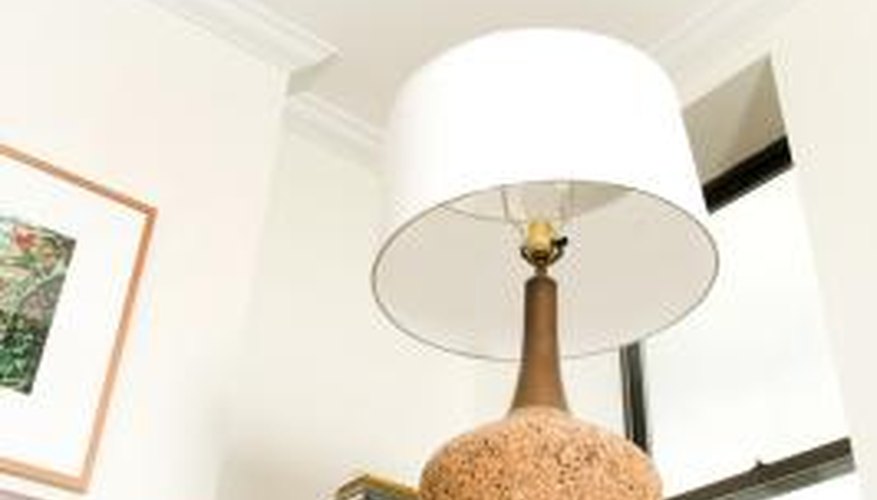Instead of buying a brand new lampshade when you redecorate or get bored of your old one, consider changing the colour of it. If your lampshade is made of a natural fibre such as cotton, linen or silk, you can dye it with regular fabric dye. Otherwise, it is still possible to change the colour but you need to use paint. Both methods work best with lampshades that are originally light in colour. Lampshades that are dark, bold, bright or patterned can still be transformed, but the results will be best if you dye or paint them with a darker shade than their original one.
Dye method
Wear rubber gloves and mix dye with cold water in a deep basin or old pot, following the instructions on the dye packaging. You need the dye bath to be deep enough to come at least halfway up the sides of the lampshade.
Place the lampshade in the basin or pot of dye. It doesn't matter if the dye does not fully cover the shade. Let the lampshade sit in the dye for about 30 seconds, then remove it, turn it upside down and put it back in the dye bath for another 30 seconds. Remove the shade from the dye and set it on old newspapers. Fabric dye will generally only take to natural fibres. It won't soak into synthetic fabrics or metals so there is no need to cover the metal parts of the shade when using this method.
- Wear rubber gloves and mix dye with cold water in a deep basin or old pot, following the instructions on the dye packaging.
- Remove the shade from the dye and set it on old newspapers.
Examine the shade and determine if the colour is deep enough. If you want a deeper colour, repeat step 2 as many times as it takes to get the depth of colour you desire.
Let the lampshade dry, sitting on newspaper, for several hours or until it is completely dry to the touch.
Paint method
Spread some old newspapers out in your garage, shed or outside and set the lampshade on top of it.
Cover the metal parts of the lampshade with paintmasking tape, unless you want to paint them too.
- Spread some old newspapers out in your garage, shed or outside and set the lampshade on top of it.
- Cover the metal parts of the lampshade with paintmasking tape, unless you want to paint them too.
Shake the can of spray paint and spray the entire lampshade with a thin, even coat of paint. Walk around the shade as you paint it, rather than lifting and moving the shade.
Wait for this coat to dry and examine the results. If you want a deeper colour or the previous colour of the shade still shows through, spray additional coats of paint. Wait for each coat to dry before spraying the next.
An alternative to spray paint is acrylic paint. Apply acrylic paint in thin coats with a sponge-tipped paint brush. Paint as many coats as it takes to get the look you want, waiting for each coat to dry before applying the next.
Instead of using a brush, create a dappled effect using a spray bottle. Mix equal amounts of acrylic paint and cold water in a spray bottle, adjust the nozzle to a fine spray, and evenly spritz the lampshade all over. For a two-tone look, wait for the first colour to dry then spray a second colour over it.
Remove the tape from the metal parts of the lampshade.
TIP
With the dye method, try a two-tone look by filling two separate dye baths with different dye colours. Dip the shade bottom-up in one colour, then when the dye is almost dry but not completely, dip it top-up in the second colour. The two dyes will bleed into each other a little where they meet and blend together nicely. With the paint method you can do more than just one solid colour -- paint stripes using masking tape to mark them off neatly, use templates to add decorative motifs, or, if you are artistic, paint a design freehand.
